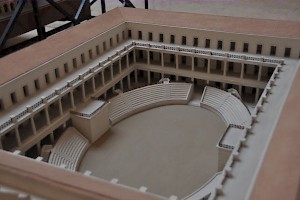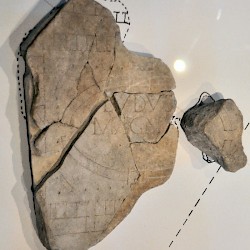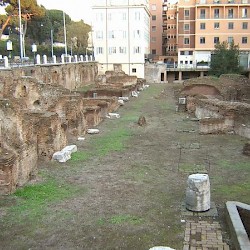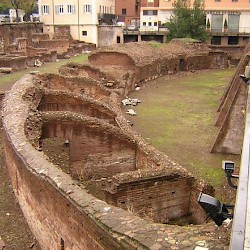Rome, Ludus Magnus
Q1232473Ludus Magnus: one of the four training grounds for Roman gladiators, close to the Colosseum.

Ludus Magnus can be translated as "big training ground". It was one of the four places where Roman gladiators were taught the tricks of their trade. (The other gladiatorial barracks were known as the Ludus Dacicus, the Ludus Gallicus, and the Ludus Matutinus. The latter appears to have been specialized in animal fights.) All were built by the emperor Domitian (r.81-96) and were east of the Colosseum, the great amphitheater that had been constructed by Domitian's father Vespasian and inaugurated by his brother Titus. The ruin of the Ludus Magnus can be seen immediately east of the Colosseum.
The cells of the gladiators on the northern side of the building have been excavated and are visible. This part was connected to the Via Labicana by a monumental entrance. The Greek-Roman historian Herodian states that the emperor-gladiator Commodus (r.180-192) used to sleep in one of these cells.note
There were three other wings of cells and the building seems to have had at least two storeys. All in all, there must have been about 130 cells. In the four corners between the arena and the surrounding porticoes, where the cells were, were water basins.
The arena, which has been partially excavated, was surrounded by seats for the public, including a VIP box. It seems that people liked to watch the exercising gladiators, because there were no less than 3,000 seats. The Ludus Magnus was restored by the emperor Trajan (r.98-117).
 Forma Urbis, Ludus Maximus |
 Rome, Ludus Maximus, Cells |
 Rome, Ludus Maximus, Arena |